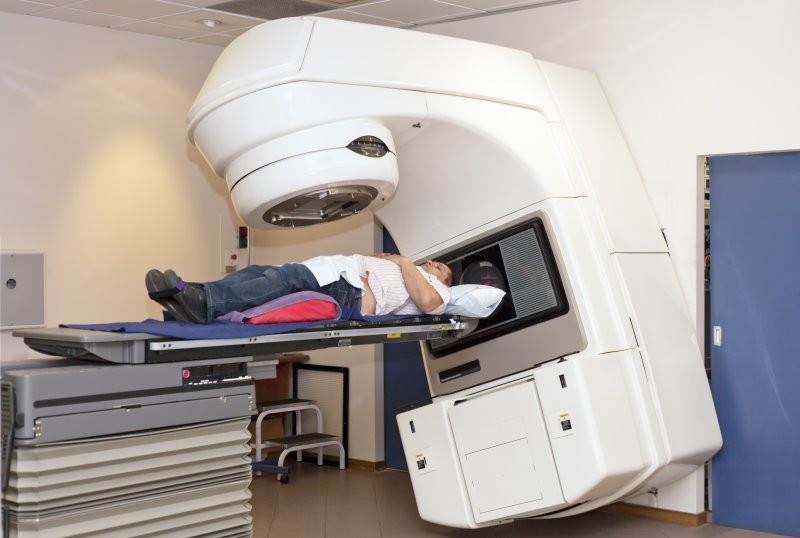No clear consensus guidelines exist for managing biochemically recurrent prostate cancer (PCa) after radical prostatectomy (RP), but evidence suggests salvage radiotherapy (SRT) is a viable option, according to the authors of an article in Nature Review Urology.1
In addition, improved imaging and biomarkers are needed to help guide the management of patients with prostate cancer (PCa) who experience disease recurrence, according to Nicholas G. Zaorsky, MD, and Amar U. Kishan.
“The results of the JCOG0401 trial suggest that standard hormonal therapy alone is not an appropriate management strategy for recurrence when compared with salvage radiation therapy,” said Dr Kishan, Assistant Professor and Chief of Genitourinary Oncology Service at University of California, Los Angeles. “Given the variable natural history of prostate cancer after recurrence, not all recurrences need treatment.”
The JCOG0401 trial demonstrated that salvage ADT (SADT) was less effective than SRT.2 Dr Kishan and Dr Zaorsky wrote that these findings combined with subset results from the TOAD trial call into question the routine use of SADT alone in managing this patient population. The Toad Trial examined immediate ADT versus ADT delayed by 2 years or more in men with PSA failure after initial definitive therapy or with non-curable disease. It was a randomized, multicenter, phase 3, non-blinded trial conducted at 29 oncology centers in Australia, New Zealand, and Canada.3
In general, patients with a recurrence after surgery stand to benefit more from a local therapy (ie, salvage radiation) than simply a systemic therapy (ie, standard salvage hormonal therapy), Dr Kishan told Renal & Urology News. “However there are important emerging data about combining hormonal therapy with radiation, and there are also new imaging studies to help guide treatment decisions that will help identify who may benefit more from systemic versus local therapy,” he said.
Currently, guidelines from the National Comprehensive Cancer Network (NCCN), American Urological Association (AUA), and European Association of Urology (EAU) recommend considering SRT with or without SADT, or observation. None of these organizations recommend specific types of imaging in the salvage setting, however.
JCOG0401 was a multicenter, randomized, open-label phase 3 trial that investigated whether SRT (64.8 Gy) followed by SADT (80 mg bicalutamide daily) in cases of SRT failure was superior to SADT alone in men with likely prostate-bed-predominant failures. In the study, which was the first to compare these strategies, time to treatment failure with bicalutamide was significantly longer among recipients of SRT with or without SADT than in the SADT only arm (8.6 vs 5.6 years), with the SRT arm experiencing a 44% decreased risk of treatment failure. However, the researchers found no differences in clinical relapse-free survival and overall survival.
“I agree these data do not support use of SADT alone in patients with biochemical recurrence post-RP, and not all patients necessarily need to be treated in this setting,” said Neha Vapiwala, MD, Associate Professor of Radiation Oncology in the Perelman School of Medicine at the University of Pennsylvania in Philadelphia. “We do not presently have validated biomarkers ready for the clinic to help identify these different subsets, but ongoing improvements in imaging technologies and genomic capabilities can help to get us there.”
Howard Sandler, MD, Professor and Chair of Radiation Oncology at Cedars-Sinai Medical Center in Los Angeles, said men with recurrence after RP have an important opportunity for curative salvage therapy with radiotherapy as shown by older studies and the JCOG0401 trial. Although evidence-based guidelines support the recommendation for SRT, it is relatively underused in the United States.
“The role of hormonal therapy along with salvage RT is still being explored, but there are clearly subsets of patients who benefit from the combination of hormonal treatment and radiotherapy for recurrence after prostate surgery,” Dr Sandler said. “We hope that we can use tumor genomics and better imaging to better personalize recommendations for salvage treatment for the 30% or so of men who develop recurrence after prostate surgery.”
References
- Zaorsky NG, Kishan AU. Salvage therapy at biochemical recurrence of prostate cancer [published online February 20, 2020]. Nat Rev Urol. (2020) doi: 10.1038/s41585-020-0290-3
- Yokomizo, A, Wakabayashi M, Satoh T, et al. Salvage radiotherapy versus hormone therapy for prostate-specific antigen failure after radical prostatectomy: a randomised, multicentre, open-label, phase 3 trial (JCOG0401) [published online December 19, 2019]. Eur. Urol. doi.org/10.1016/j. eururo.2019.11.023.
- Duchesne GM, Woo HH, Bassett JK. Timing of androgen-deprivation therapy in patients with prostate cancer with a rising PSA (TROG 03.06 and VCOG PR 01-03 [TOAD]): a randomised, multicentre, non-blinded, phase 3 trial. Lancet Oncol. 2016;17:727-737.
This article originally appeared on Renal and Urology News
